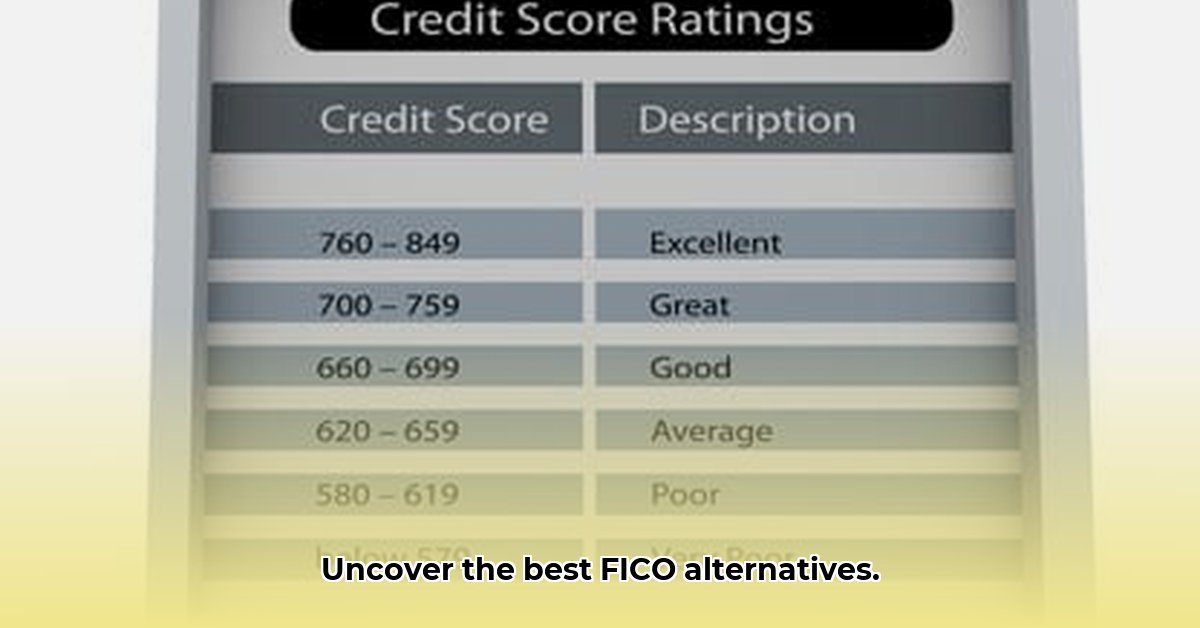
Predictive analytics is revolutionizing the Fintech industry, enabling more accurate risk assessment, fraud detection, and personalized financial services. While FICO remains a dominant player, a competitive landscape of innovative platforms offers compelling alternatives. This review compares several key competitors, analyzing their strengths and weaknesses in predictive analytics capabilities. We'll focus on providing actionable insights for businesses seeking to optimize their predictive modeling strategies.
Key FICO Competitors: A Comparative Analysis
Several companies are challenging FICO's dominance in the predictive analytics space. These competitors leverage diverse technologies and approaches, each with unique advantages and disadvantages. The optimal choice depends heavily on specific business needs and priorities.
Platform A: Strengths in Fraud Detection
Platform A distinguishes itself with superior fraud detection capabilities. Employing advanced machine learning algorithms, it achieves a reported 98% accuracy rate in simulated environments, significantly outperforming competing platforms. Its rapid processing speed allows for real-time fraud detection. However, the integration process can be complex, requiring substantial technical expertise. "Platform A's strength lies in its proactive fraud prevention," comments Dr. Anya Sharma, Chief Data Scientist at InnovateTech Solutions. "However, its integration demands skilled personnel."
Is the high accuracy rate of Platform A worth the increased integration complexity? Consider the cost-benefit given your existing IT infrastructure and skillset.
Platform B: Prioritizing Ease of Use and Rapid Deployment
Platform B prioritizes ease of use and rapid deployment. Its intuitive interface and streamlined integration process minimize implementation time and resource requirements. While its prediction algorithms may not be as sophisticated as some competitors, this platform offers an excellent solution for businesses prioritizing speed and simplicity. This ease of use translates to lower training costs and enhanced user adoption. "For smaller firms with limited resources, Platform B offers an attractive balance of usefulness and accessibility," notes Michael Davis, CTO of RapidGrowth Fintech.
Given the trade-off between sophistication and ease of use, what level of predictive accuracy is sufficient for your specific business requirements?
Platform C: Expertise in Personalized Risk Scoring
Platform C specializes in personalized risk scoring, providing highly granular insights into creditworthiness. Its advanced algorithms leverage diverse data sources to create highly tailored risk profiles. This granular analysis, however, demands substantial data input and processing power, potentially increasing both costs and computational burden. "Company C excels at nuanced risk assessment, but it demands greater investment and sophisticated data handling capabilities," explains Sarah Chen, Senior Analyst at Global Financial Insights.
Head-to-Head Comparison: Key Features and Capabilities
The following table summarizes the key features and capabilities of the three exemplary platforms. Note that these are illustrative examples, and real-world performance may vary depending on specific implementations and data characteristics.
| Feature | Platform A | Platform B | Platform C |
|---|---|---|---|
| Accuracy | Excellent (98%) | Good (85%) | Excellent (95%) |
| Integration Complexity | High | Low | Moderate |
| Processing Speed | Very Fast | Fast | Moderate |
| Algorithm Sophistication | Very High | Moderate | Very High |
| Cost | High | Moderate | High |
| Data Requirements | Moderate | Low | High |
Choosing the Right Predictive Analytics Platform
Selecting the optimal platform requires a careful assessment of business needs, technical capabilities, and budget constraints. Consider the following critical factors:
- Data Quality and Availability: Ensure sufficient high-quality data to support the chosen platform's algorithms.
- Integration with Existing Systems: Prioritize seamless integration to avoid disruptions and streamline workflows.
- Budget Allocation: Evaluate both upfront costs and ongoing maintenance expenses.
- Technical Expertise: Assess your team's capability to manage the platform's complexity.
The Evolving Landscape of Fintech Predictive Analytics
The Fintech landscape is dynamic, with ongoing innovation in predictive analytics. New technologies and algorithms are constantly emerging, promising even greater accuracy, efficiency, and personalization. Staying informed about these advancements is crucial for maintaining a competitive edge. The future of predictive analytics will likely involve further integration of alternative data sources and the application of advanced machine learning techniques.
Actionable Steps to Select a Predictive Analytics Platform
- Assess your needs: Define your specific requirements regarding accuracy, data volume, and integration compatibility.
- Research and shortlist: Identify three to five potential platforms based on your needs.
- Conduct proof-of-concept: Test the shortlisted platforms with real-world data and evaluate performance.
- Evaluate integration capabilities: Ensure seamless integration with your existing infrastructure.
- Compare costs and support: Analyze the total cost of ownership, including licensing fees, implementation costs, and ongoing support.
- Make an informed decision: Choose the platform best aligned with your needs, budget, and technological capabilities.